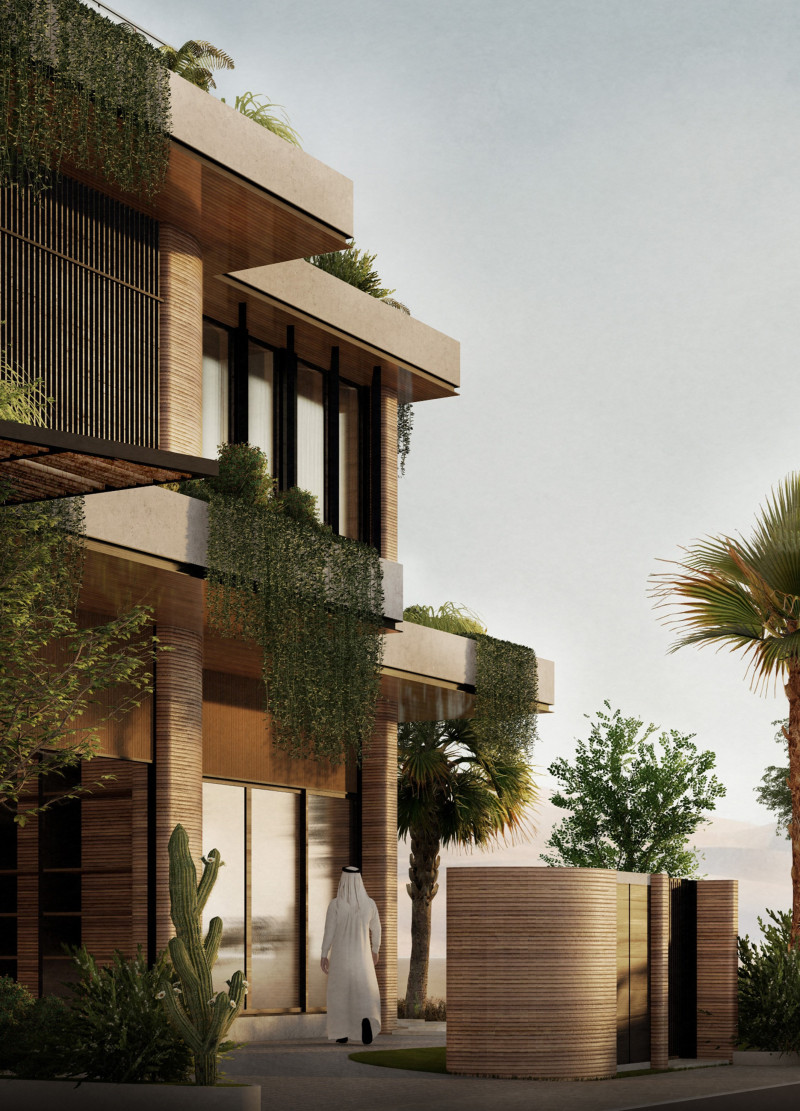5 key facts about this project
The design embodies a unique blend of contemporary architectural elements and local cultural references, resulting in a structure that not only meets the needs of its users but also resonates with the local identity. Each component of the project has been meticulously planned to ensure that it captures the essence of its geographic location while promoting usability and environmental harmony.
The building’s exterior is crafted using a combination of materials that highlights both durability and modern aesthetics. The primary materials employed include reinforced concrete, offering structural integrity alongside thermal mass benefits, while extensive glazing provides ample natural light, creating an inviting atmosphere. Elements such as timber cladding may also be integrated, echoing local craftsmanship and environmental sensitivity, which helps to soften the building's overall visual impact and bridge the gap between the natural and built environments.
Inside, the spatial organization reflects a well-thought-out flow designed to enhance user experience. Open-plan areas promote collaboration and interaction, aligning with contemporary work and community habits, while strategically placed nooks and secluded spaces cater to the need for privacy and focused activity. This thoughtful design addresses the varied needs of its users—be they individuals seeking quiet reflection or groups engaged in dynamic discussions.
Attention to sustainability is evident throughout the project, evident in features such as green roofs and rainwater harvesting systems. These elements not only lower the ecological footprint of the building but also foster a sense of responsibility toward the environment among its occupants. The incorporation of renewable energy sources, such as solar panels, further enhances the project's commitment to sustainability, providing a functional yet symbolic gesture toward future-facing architectural practices.
In terms of unique design approaches, the project pioneers adaptive reuse principles by creatively rehabilitating existing structures within its site. This practice not only preserves historical elements of the region but also reduces waste and the consumption of new resources, aligning the project with sustainable architecture ideals. The thoughtful juxtaposition of old and new creates layers of history, giving users a richer context and narrative that reflects both the past and the present.
Outdoor spaces are another highlight of the design, providing seamless transitions between interiors and exteriors. Landscaped areas, terraces, and communal gardens encourage social interaction and foster a sense of community, making them vital components of this architectural intervention. These spaces elevate the overall experience by establishing a connection with nature, contributing to the mental well-being of users.
Through its intelligent use of materials, innovative design responses to functional demands, and a commitment to sustainability, this architectural project stands out as a model of contemporary design thinking. It serves not only its immediate community but also acts as a reference for future projects that aim to achieve a balance between aesthetics, functionality, and environmental stewardship. As design enthusiasts and professionals explore this project further, examining architectural plans, sections, and detailed designs, they will uncover deeper insights into its conceptual framework and execution. This project illustrates how thoughtful architecture can shape our environments, providing a blueprint for future sustainable and community-focused designs.


 Yi Yang Chai
Yi Yang Chai 























